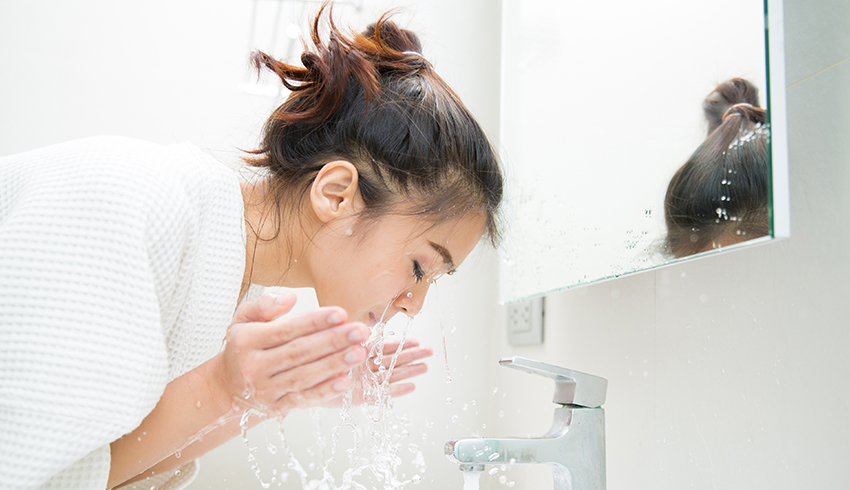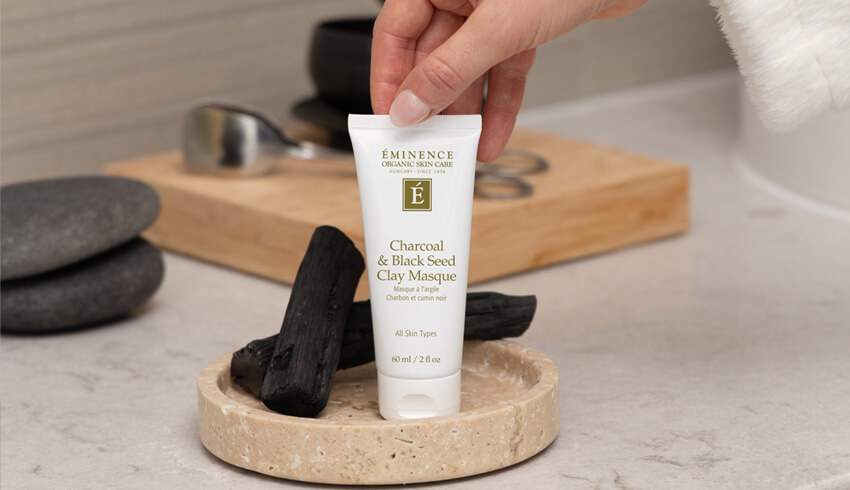
When it comes to treating acne, experts agree: Clay is a miracle worker. In addition to being rich in beneficial minerals, clay has the capacity to draw out and soak up acne-causing impurities. With its absorbent, exfoliating and astringent properties, clay not only tackles the root causes of acne but also treats ongoing symptoms that plague breakout-prone skin. Read on to uncover the benefits of clay masks and why they are a must for your acne skin care routine.
Clay Face Masks
Clay has a long history in skin care. As early as the Mesopotamian era, this remarkable ingredient was used to heal wounds, soothe inflammation and cleanse the skin. Ancient Egyptians combined clay with olive oil to brew skin-softening soaps, and Cleopatra is known to have applied a dead sea clay mask twice a week to purify her complexion. Today, clay continues to be a central component of many in-spa and at-home treatments, including detoxifying body wraps and clarifying face masks.
Benefits of Clay Masks for Acne
Clay is a go-to ingredient in many anti-breakout treatments, especially acne face masks. Here are five ways that clay face masks help improve breakout-prone complexions.
1. Restore Balance
One of the primary causes of acne is excess oil production. When the skin overproduces sebum, its pores enlarge and stretch to hold in the surplus. In addition to coating the skin’s surface, excess oil can become trapped within pores, where it combines with dead skin and bacteria and triggers breakouts. However, the answer isn’t to suck all the moisture from your skin; after all, sebum is essential to your skin’s health and helps to lubricate and soften its surface. Clay has the unique ability to absorb excess oil from the skin’s surface without compromising necessary hydration. The result: a perfectly balanced complexion.
2. Draw Out Impurities & Shrink Pores
Every pimple begins with a clogged pore, and a critical first step in treating acne is removing dead skin cells and clearing blockages. Eminence Organics International Trainer Jude Herrera tells us, “Clays help to detoxify the skin and draw out impurities and oil from its surface. This is especially helpful for those with acne or oily-prone skin.” Think of clay like a magnet: It is composed of negatively charged particles that bind to positively charged impurities (like toxins and bacteria) and pulls them from your pores. This produces an astringent action that relieves congestion from pores and allows them to shrink back to their normal size.
3. Absorb Oil & Minimize Shine
Clay doesn’t just draw impurities from pores and expel them onto the skin’s surface. Rather, it is highly porous and absorbent - much like a sponge. When wet, clay swells and binds to impurities and, as it dries, soaks them into its center. In addition to absorbing sebum and bacteria that have been drawn out of pores, clay sops up excess oil and dead skin cells from the skin’s surface. This gentle exfoliating action not only rids skin of acne-causing contaminants, but it also reduces surface shine and contributes to a more mattified complexion.
4. Nutrient-Rich
Along with its purifying properties, clay also provides essential nutrients and minerals to maintain your skin’s health. Clay is formed over long periods of time by the gradual erosion of mineral-rich rocks and, as a result, is rich in beneficial elements like silica, calcium, magnesium, sodium, copper, iron and potassium (to name a few). Silica, in particular, is required for collagen production and plays a key role in keeping skin plump, firm and elastic. This can be helpful in minimizing the appearance of ice pick acne scars which are often the most difficult to treat.
5. Suitable For All Skin Types
To top things off, clay face masks are suitable for all skin types. Jude tells us: “Even if you’re not plagued by breakouts, clay can be rich in minerals and acids that benefit other skin types, too.” Clay face masks are often composed of a variety of types which can treat a multitude of skin types and conditions. For example, oily and acne-prone skin can benefit greatly from montmorillonite clay’s purifying and deeply absorbent properties. The clays you choose will depend on the results you hope to achieve for your complexion.
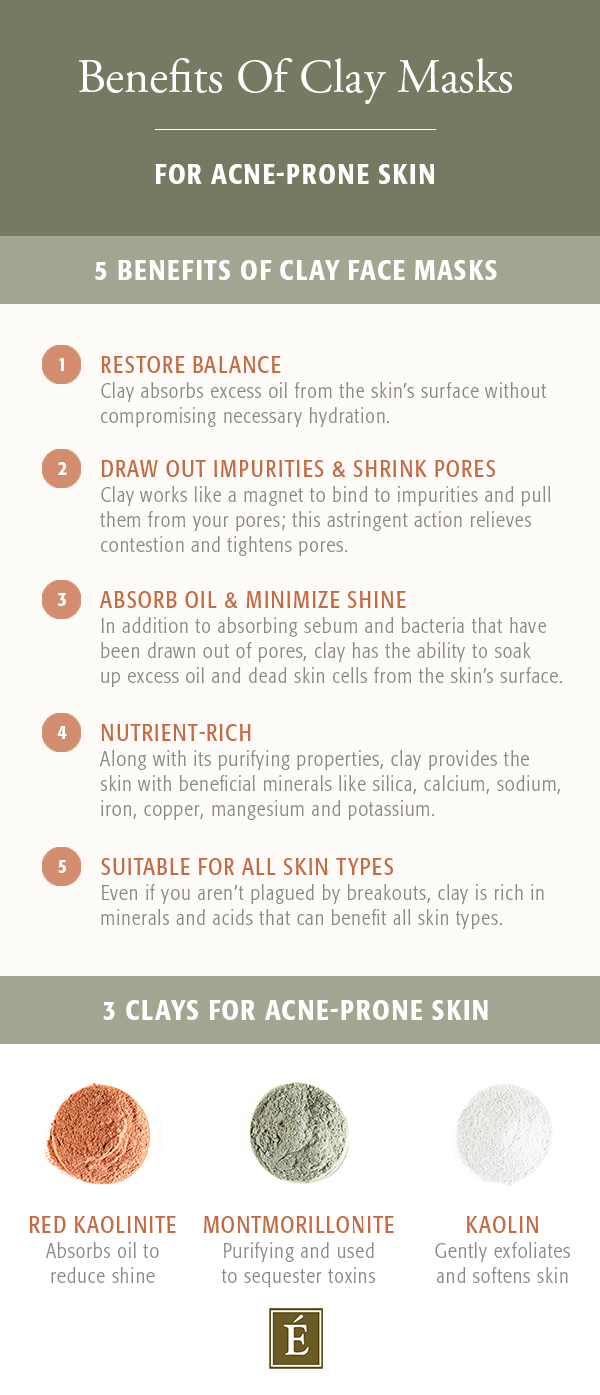
3 Clays for Acne-Prone Skin
If you’re wondering what the right mix is for acne-prone skin, we’ve done the work for you. Here are three types of clays that combine in the Acne Advanced Clarifying Masque to exfoliate, absorb excess oils and deep clean pores.
Product Picks
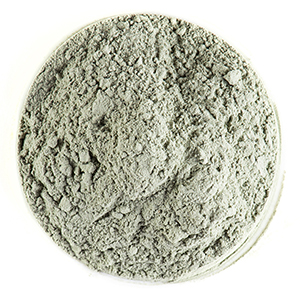
1. Montmorillonite Clay
Montmorillonite clay is known for its high mineral content and super absorbing capabilities. When mixed with water, it has a strong electric charge that enables it to attract and bind to pore-clogging oil and bacteria. Because of its highly porous nature, it can absorb more than its initial mass and easily soaks up impurities pulled from pores and the skin’s surface. The result is a deep clean that relieves acne-causing congestion and shrinks pores.
2. Kaolin Clay
Kaolin is well known as the mildest of the clays. But, don’t mistake mild for ineffective; this calming clay is also an excellent acne-fighter. The magic of kaolin is its ability to gently exfoliate and unclog pores while keeping the skin’s natural moisture intact. This is particularly beneficial for breakout-prone skin which requires a strong moisture barrier to lock in hydration and keep out potential irritants. Kaolin clay pulls double duty: It eliminates dead skin cells and debris, as well as softens skin for a smoother complexion.
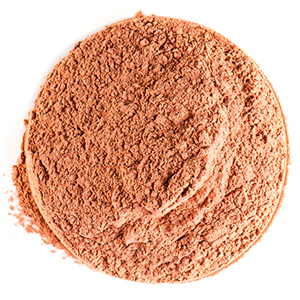
3. Red Kaolinite
If you’re plagued by extra oily skin, add red kaolinite to your arsenal. This clay is known for its exceptional oil-absorbing properties and ability to reduce shine. A strong cleansing clay, red kaolinite penetrates deep into pores to soak up the excess sebum that causes acne breakouts. Additionally, it benefits from high levels of iron oxide that give it its vibrant hue. Joshua Zeichner MD tells Refinery29: “All clays contain minerals that soothe skin and absorb excess oil, but the high levels of iron oxide in red clay explain why it’s particularly useful for purifying, brightening and strengthening the skin.”
How to Apply a Clay Face Mask
Now that you’re well-versed in the benefits of clay, it’s time to apply an acne face mask. The question is: How? A unique feature of clay masks is that you can tailor the “wetness” of the mask to your particular skin type. The drier and more sensitive your skin, the damper you want the mask to be when you remove it (pro tip: to help retain moisture, you can intermittently spritz the mask with water while it is sitting on your face). Here are a few steps to keep in mind:
- Always start with a freshly cleansed face
- Apply a small amount of product evenly over your entire face and neck
- Let the mask gradually dry (this will take between five and ten minutes)
- When the mask is still slightly damp (i.e. not flaking off your skin), rinse with lukewarm water
- Gently remove any residue that is still clinging to your face with a damp washcloth
Using a Face Mask as a Spot Treatment
Did you know that clay face masks can double as spot treatments? Simply dab a small amount on a pimple and let it work its magic overnight. Eminence Organics Lead Skin Care Trainer Natalie Pergar recommends spot treating with Acne Advanced Clarifying Masque to clear bumpy and congested skin: “It’s nice and creamy in texture and you literally need a little bit … Just hit those little areas and let it dry. I have heard that people love to sleep with this one on.” Christina B., a before-and-after model for the Acne Advanced 3-Step Treatment System, does just that, saying: “Before bed, I apply it on any breakouts I have, and in the morning, they’re 80-90% gone, if not completely.”
After learning the ins and outs of clay face masks, are you ready to add them to your acne skin care routine? Share your thoughts with us in the comments below.


